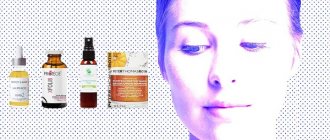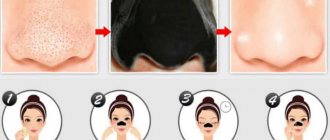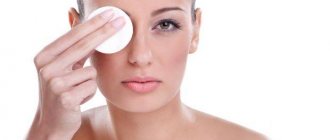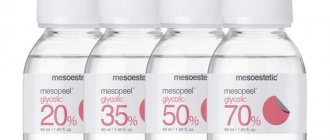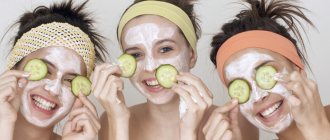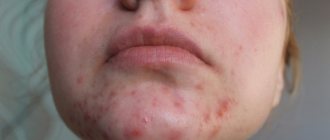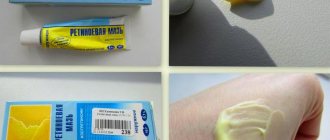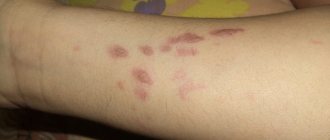When choosing physical or chemical exfoliation as a means of youth and beauty, many people think about how often they can do facial peeling. This is a complex and delicate question, the answer to which will be individual for each woman. The frequency of peeling procedures depends not only on the time of year, but also on the depth of exposure of the skin to acidic compounds or abrasive materials, on the age and reaction of the skin to exfoliation. Knowing what the breaks should be between the most popular peeling procedures, and what the intervals between courses should be, is important in order to obtain the expected aesthetic effect, and not complications.
How to do it correctly: instructions for use
Let's find out how to properly use facial peeling, what stages, besides preparation, application and removal, does the procedure contain? How long should you keep the peeling composition on your face?
Stages of carrying out in the salon
Salon peeling has many advantages , since a specialist will work with you who will help you choose the appropriate type and level of impact, take into account all contraindications and do everything professionally.
The specific technology will depend on the type of peeling. Each salon can carry it out in its own way, but the general stages of the facial peeling procedure are the same and require the following sequence:
- First, the facial skin is steamed.
- A chemical solution is rubbed into it, which can cause a tolerable burning sensation.
- If necessary, anesthesia is administered.
- If a hardware technique is used, then the face is exposed to laser, ultrasound, brushes and other devices, depending on the technique.
- The technician carefully removes unabsorbed residues of the product.
- The skin is then treated with an antiseptic and a solution that soothes the skin.
- If the peeling is deep, a bandage of wide bandages may be applied - a mask that is removed over the next few days.
- Then comes the rehabilitation period, during which the skin should not be exposed to any mechanical stress or ultraviolet radiation. A specialist can give additional recommendations on how to care for it.
How to make at home
You can cleanse your skin at home with ready-made products offered by cosmetic manufacturers, or prepare mixtures yourself.
How to apply peeling at home? Several recipes:
- For oily skin. For cleansing, you can use a combination of honey and sea salt, which are mixed in equal proportions. The composition is rubbed into the skin with massaging movements. This is done for several minutes, then the mixture should be washed off with cool water.
You can use infusions of chamomile, sage, and mint. Finally, use a light texture cream.
- Rejuvenating peeling.
For a rejuvenating effect, you can use mandelic acid. First you need to thoroughly cleanse the skin of sebaceous contaminants, cosmetics, and steam your face. First, apply a tonic with mandelic acid at a five percent concentration. Then pre-peeling is done with 10% acid. At the third stage, a drug of thirty percent concentration is used. At the end, you need to wash your face with water, make a soothing mask, applying it for 15 minutes. - For dry skin. The composition should be more delicate. Take one apple and three strawberries.
Grate them and rub them into the skin in a circular motion for a couple of minutes. You can leave the mixture on your face for 15 minutes, then wash it off. It is recommended to complete the session with a cream with a light texture.
- For whitening. This procedure will get rid of unsuccessful tanning or pigmentation.
For the recipe you will need one cucumber, which needs to be washed, peeled, and squeezed out the juice from the resulting mass. Add a large spoonful of oatmeal to the liquid.
The mixture must be thoroughly kneaded and a large spoonful of sea salt added. The consistency of the composition should resemble cream. Add a couple of drops of rose oil to it.
Rub the mixture into your face for two minutes with massage movements, then leave the composition on the skin for 10 minutes, rinse off the product.
- For normal skin. To cleanse and exfoliate it, you can use a mixture of three tablespoons of oatmeal, the same amount of orange zest and chamomile decoction. The mixture is rubbed into the skin in a circular motion. Then you need to leave it on your face for five minutes. Rinse off with soft water or herbal infusions.
To make the task easier, you can use ready-made peeling compositions offered by cosmetic manufacturers. Without a cosmetologist, only superficial peeling can be done.
For home exfoliation, pharmaceutical products with a low concentration of acids or natural fruit acids can be used.
How to apply facial peels? Peeling preparations are used in a standard way.
First you need to thoroughly clean your face and degrease it. Then the composition is applied to the skin, rubbed in with light massage movements for several minutes and washed off.
After washing, you need to apply moisturizer.
Selection rules
There are many types of exfoliation , and to understand which one is best for you, it is better to consult with a cosmetologist.
- According to the method of influence, it can be mechanical, chemical, ultrasound, enzyme, laser, there is also mesopeeling, peeling with fruit acids.
- According to the depth of impact, cleansing can be superficial, medium or deep.
Let's take a closer look at who is suitable for certain types of exfoliation:
- Mechanical peeling. It is usually carried out with a device that sprays abrasive particles. This promotes cleansing, elasticity, and helps eliminate scars. It can get rid of age-related changes - the face will become more elastic, wrinkles will disappear.
- Chemical. It involves the influence of various chemicals that cause the correct reaction in the layers of the epidermis.
Suitable for brightening the face, eliminating wrinkles, scars, rejuvenating.
- Ultrasonic. This procedure is popular because it gives quick results without causing injury. Suitable for almost everyone, helps eliminate imperfections, evens out tone.
- Fruit acids involve the use of mandelic, malic, grape or lactic acid. The procedure is quick, painless, helps eliminate unevenness, moisturizes and synthesizes collagen and elastin in skin cells.
- Enzyme exfoliation is considered light and gentle and is intended to solve simple skin problems. It is carried out with enzymes - enzymatic substances that have a beneficial effect on local immunity, improve blood circulation and increase the elasticity of the integument.
- Mesopeeling. Involves the use of one percent glycolic acid. It is very popular because it has almost no contraindications and can be performed at any time of the year. After the procedure there is no redness or peeling left.
- Laser. In this type, the laser beam enters the skin cells and stimulates collagen synthesis. This technique helps eliminate dark circles, smooth out wrinkles, and gives the face a healthy appearance.
- Superficial peeling is indicated for young skin to solve its current problems.
It helps eliminate fine wrinkles. During the procedure, the effect is aimed at the upper layers of the epidermis. It can be carried out using mechanical, enzymatic and fruit-acid methods.
- Medium helps whiten and moisturize the face, smoothes out scars, wrinkles, and rejuvenates. The procedure requires serious rehabilitation over several weeks, so cosmetologists recommend combining it with a vacation. This type of treatment includes TCA peeling.
- Deep peeling acts on the deep layers of the dermis, allowing you to achieve rejuvenation results that can be compared to plastic surgery. The effect lasts for almost several years.
It can be carried out using hardware or chemical methods, only under the supervision of a specialist, usually under general anesthesia. This cleansing is recommended for aging skin.
Only superficial exfoliation can be done at home. Usually, preparations containing acids are used for this.
About the types, purpose, benefits and harms of peelings in this video:
How often can you repeat
How many times a week (or month) can you peel your facial skin and do you need to do it every day if you are prescribed a course of procedures?
The frequency of peeling is determined by the individual characteristics of the skin and the strength of its action. The stronger the technology used, the more sensitive the epidermis, the less often it can be done.
Salon hardware techniques are usually carried out once a week in a course of 2-8 procedures. Then the skin should rest for about a month.
Acid surface peelings are done once every two weeks in a course of 4-6 procedures.
Medium and deep ones are performed no more than once every six months in the autumn or spring.
How many peels should you do at home? The frequency of home peelings depends on your skin type.
For oily skin, this frequency is 1-2 times a week, for combination and normal skin – once a week, for dry and sensitive skin – no more than once every 14 days.
It is important to monitor the reaction of the epidermis and prevent dryness or irritation.
The result of completing a course of procedures will be the renewal of the epidermis.
It will be lighter, more uniform, pigment spots and other imperfections will disappear. The surface of the skin will be smoothed, small wrinkles will disappear.
Professional procedures increase the synthesis of collagen, elastin and hyaluronic acid in the skin, increase its level of moisture, tone, and elasticity.
General cleaning of your skin - what products can be used:
- Mediderma.
- StopProblem.
- Planet Organica.
- Arabia.
- Peel Medical.
Rehabilitation
After chemical peels, you need to take good care of your skin to give it a chance to recover. First of all, hydration is necessary. It is recommended to use products with hyaluronic acid, panthenol, aloe and vitamins. In addition, you should avoid any aggressive procedures, the use of alcohol-containing cosmetics, retinoids, and mechanical scrubs. When crusts appear, you cannot remove them yourself - you should be patient and wait until they fall off spontaneously.
It is extremely important to protect your face from ultraviolet radiation. The renewed epidermis is especially sensitive to such effects, so the risk of age spots increases. So the use of protective lotions with a high SPF factor is mandatory not only in the summer (when peeling is generally not recommended), but also in the winter.
To maintain the effect, your doctor may recommend using special cosmetics containing acids. They can be included in creams for everyday use in low concentrations sufficient to preserve the results for a long time.
After superficial treatment, the skin is restored quickly, however, during the entire course and two weeks after its completion, careful care and avoidance of any aggressive influence are necessary.
When is the best time to carry out
The optimal time for cleansing is the evening , but no later than two hours before bedtime. This will give your facial skin time to rest and recover overnight.
It is effective to carry out the procedure after taking a warm bath, when the skin is steamed and its pores are open. After exfoliation, it is recommended to use a mask and night cream.
This care program is considered optimal, since the active components penetrate into the deep layers of the epidermis and are better absorbed.
Based on the time of year, the period from October to April is considered optimal for salon peeling. At this time, solar activity is low, so ultraviolet radiation will not have a negative effect.
Another advantage of this time is the absence of heat. We will tell you how to choose the season for different types of peeling in a separate article.
Action of the procedure
The main essence of the procedure is to remove dead cells from the surface of the skin. Cells on this surface can remain viable for up to 30 days, after which they die.
They need to be eliminated on time , otherwise they will cause clogging of pores.
This can lead to dermatological diseases, nutritional deficiencies and early aging. To prevent these consequences, it is worth doing peeling.
Salon techniques have a powerful effect, but you can cleanse your skin at home using products designed for this.
After removing the top layer of dead cells, the skin immediately becomes soft and smooth.
The procedure helps remove pigmentation, helps even out complexion, smooth out wrinkles, and eliminate age-related changes, so if there are no contraindications, you can consider having it done.
Side effects
They may appear if you choose a too concentrated drug or extend the exposure time:
- Swelling. In the first hours after peeling, slight swelling may appear. They go away on their own after a couple of hours.
- Burns. In this case, rinse your face with cool water and apply any regenerating cream. You can continue peeling, but only after the face has completely healed.
- Allergy. Take antihistamines and consult your doctor. You can no longer continue such procedures at home.
- Pigmentation. If your skin is highly photosensitivity, spots may appear. Peeling should be stopped.
- Dryness. If excessive dry skin occurs, use deeply moisturizing creams and masks. Further peeling at home is possible, but reduce the duration of exposure.
Follow the instructions carefully. Carry out chemical peels correctly at home and you will get a great result: a clean and youthful face.
Questions and answers
We are in active correspondence with our readers and have selected for you some interesting questions regarding glycolic peeling.
- Question: I did a glycolic peel at home and the number of acne sharply increased, why? Answer: Despite all the unique, beneficial properties, glycolic acids have one significant drawback - it stimulates the formation of acne. Do not forget that the skin itself becomes thinner, which allows microorganisms to easily penetrate its structures. Therefore, before and after peeling, Skinoren should be used for prevention.
- Question: Which is the best glycolic peel to choose for use at home? Answer: When choosing, pay attention to the percentage of acidity (it can vary from 5 to 50%) and pH level (this is indicated on the package). The most effective peelings are with an acid concentration of 30-50%; pH level below 2.0 (the lower the pH, the more traumatic the impact). A more concentrated peeling solution can cause burns and should not be used at home.
- Question: I live in the Black Earth Region, I heard that glycolic peeling cannot be used in the spring and summer. When is it best to carry it out (at home) so that it is safe? Answer: For residents of central Russia, the ideal time for acid peeling both at home and in a salon is from the end of September to mid-April. If you live in the southern regions, the best period is from November to early February.
Complications
TCA peeling is a traumatic and painful procedure. If you ignore contraindications and do not properly care for your skin, the following complications may occur:
- if the patient had diseases of a herpetic nature, they may worsen;
- in some cases, keloid scars appear on the treated areas of the skin;
- hyperpigmentation of the epidermis begins;
- A noticeable boundary between skin structures (demarcation line) appears on the treated area.
Photos before and after peeling
How noticeable the peeling result will be largely depends on subsequent care. To do this, you must adhere to the following rules:
- Wash your face every morning and evening without soap. To cleanse the skin, it is better to use moisturizing foams with a neutral pH. You should wipe your face using gentle blotting movements.
- Do not rip off peeling areas under any circumstances. Careless removal of the scab may cause bleeding, which will slow down the healing process.
- After medium and deep peeling, painful sensations may be observed for a long time. Painkillers will help relieve the condition. However, you cannot wash your face for 2 days after the session.
- Avoid strenuous physical activity.
- Spend more time outdoors, not forgetting about sun protection in the form of a wide-brimmed hat and high-protection creams.
It is important to know! Decorative cosmetics can be used no earlier than 1 week after facial peeling.
Facial peeling is a fairly effective procedure that helps get rid of various cosmetic defects in a short time. The effect of such exposure lasts for a long time.
Patient reviews
- Nina, 20 years old: “I have pronounced freckles and I have been doing whitening exfoliation with ascorutin or citric acid for a long time. These are very effective recipes that do not require the purchase of expensive ingredients - they help me lighten freckles, clean out pores and get rid of acne.”
- Oksana, 25 years old: “I have a dry skin type - to cleanse and moisturize I do fruit acid peeling with the addition of sandalwood oil. The effect is amazing - in addition to peeling, such mixtures help me smooth out shallow wrinkles.”
Regardless of the choice of a salon or home acid cleansing method, it is important to pay maximum attention to caring for the damaged epidermis during the recovery period - you should regularly use moisturizers and nourishing products, and apply sunscreen to your face before each time you go outside.
In addition, it is recommended to avoid excessive physical activity, stop drinking alcohol and smoking - such bad habits contribute to dry skin, and increased sweating increases the risk of spreading infection.
Rating

